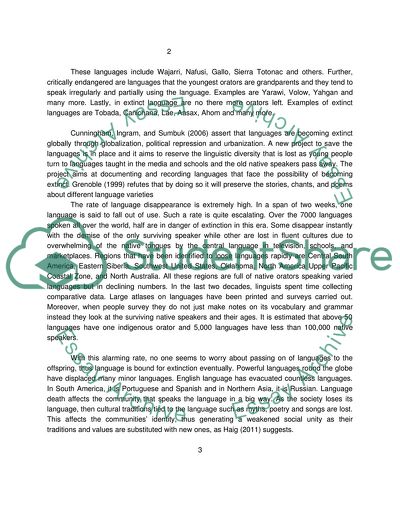Cite this document
(“Endangered languages and cultures Essay Example | Topics and Well Written Essays - 1500 words”, n.d.)
Retrieved from https://studentshare.org/humanitarian/1676396-endangered-languages-and-cultures
Retrieved from https://studentshare.org/humanitarian/1676396-endangered-languages-and-cultures
(Endangered Languages and Cultures Essay Example | Topics and Well Written Essays - 1500 Words)
https://studentshare.org/humanitarian/1676396-endangered-languages-and-cultures.
https://studentshare.org/humanitarian/1676396-endangered-languages-and-cultures.
“Endangered Languages and Cultures Essay Example | Topics and Well Written Essays - 1500 Words”, n.d. https://studentshare.org/humanitarian/1676396-endangered-languages-and-cultures.


